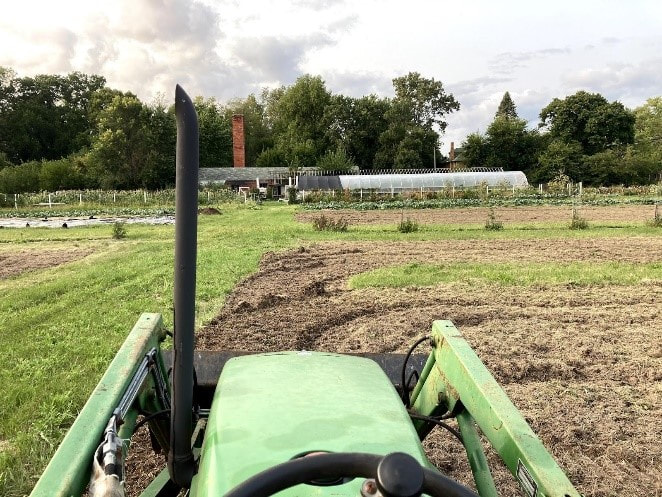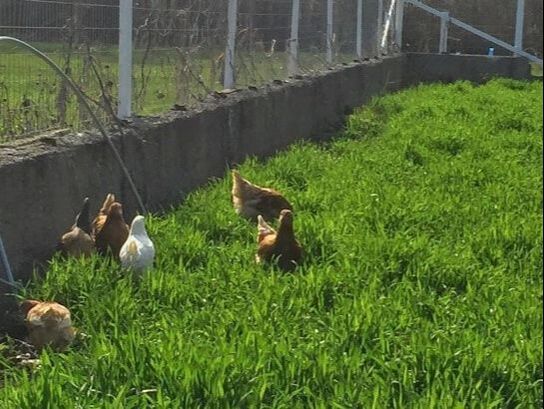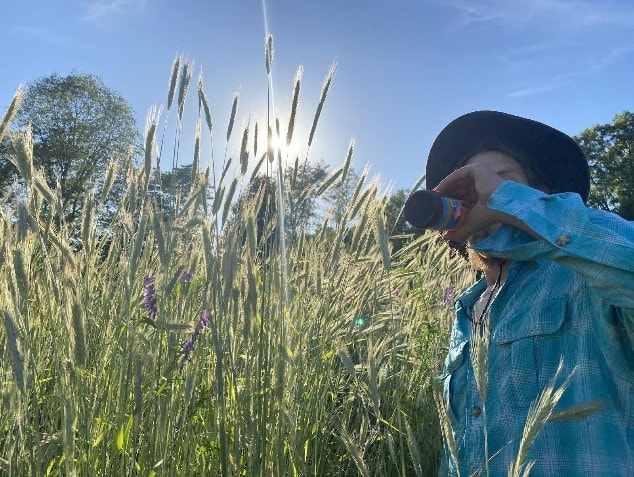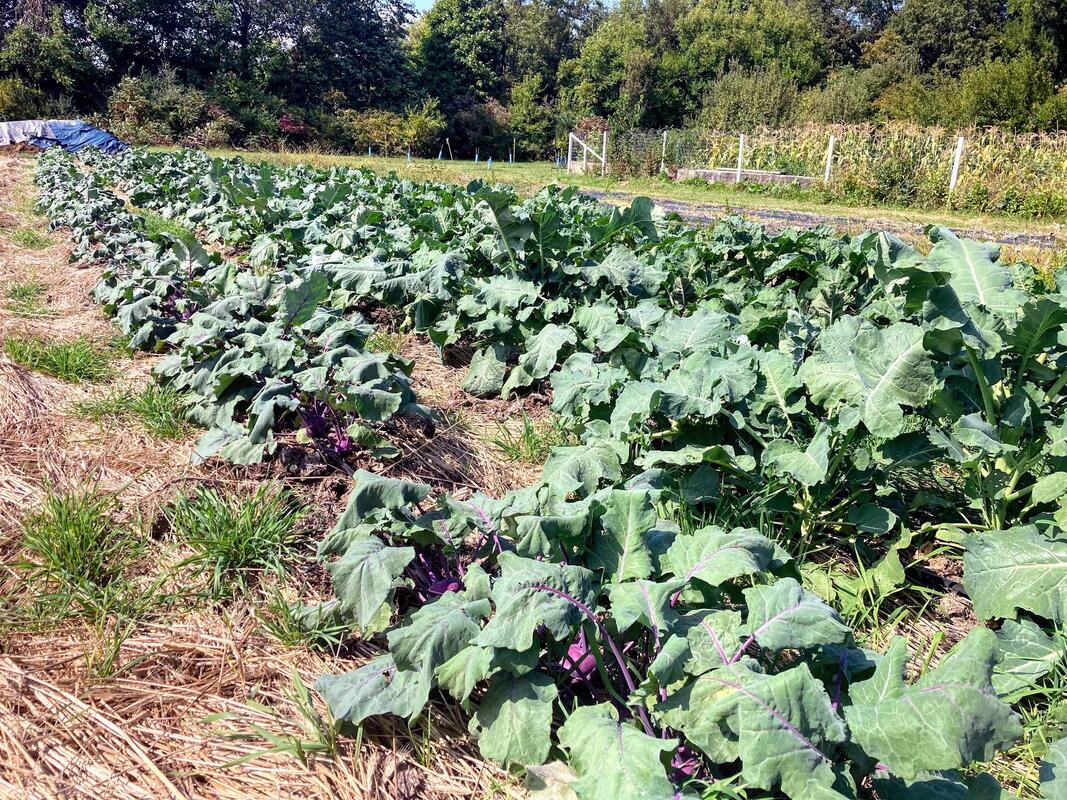|
We’ve added wood chips to all the walkways on our Fort Wayne farm, which required a lot of manual labor. However, we know this will pay off in the years to come. Wood chips have so many benefits. They reduce soil compaction, reduce wedding, keep the soil moist, and provide food for insects and mycelia (mushroom “roots"). As an added bonus, the wood chips decompose into compost in a year or two. This can be shoveled onto the vegetable beds to help all your Fort Wayne CSA goodies grow! Wood chips also mark the growing beds, which is integral as we move to a no-till system with permanent growing beds. In traditional row crop farming, the entire field is mechanically plowed and tilled to remake the beds each year. However, there are a lot of benefits to permanent beds:
In the photo above, the broccoli and cabbage were planted into straw mulch, which was left over from the previous garlic crop. These were planted just days after the garlic was harvested (I added a bit of added compost from our chickens). The year after, there was some remaining straw mulch, and I planted potatoes into this in the early spring. That's three crops with just one mulch application on our Fort Wayne farm!
0 Comments
When designing the initial layout for our biodiverse Fort Wayne farm, I knew I wanted to incorporate several hedgerows into the design. Hedgerows are essentially perennial beds spaced every 100 feet that incorporate dozens—if not hundreds—of herbs, flowers, fruits, and trees. Hedgerows are designed to flower most of the growing season. Their occupants span from a fifteen-foot pear tree to creeping thyme (a six-inch ground cover). Hedgerows accomplish three main goals for our Fort Wayne farm:
Dahlias do not survive over the winter in our Midwestern climate. When lows in the mid-teens come, we work hard to dig and divide the dahlia tubers on our Fort Wayne farm. Dahlias grow into large clumps of tubers below ground, which can be divided and replanted each year. With a bit of care and proper storage, we can propagate dozens of new plants off a single cluster! Each cluster is cleaned, cut in half, and divided into smaller tubers for storage. It is important that each tuber has an “eye,” or growth spot, located near the stem of the main cluster. Dahlias need the energy stored from the root to make it through the winter storage, but they will not sprout without an eye. Divided tubers with eyes end up looking like small potatoes or even weird, gnarly fingers. It's because of the eyes that the tubers have these long, delicate necks as pictured on the right above. Once the tubers are cleaned and free from any debris that may cause rot, we wrap them in plastic to ensure they do not dry out in winter storage. The wrapped tubers are stored in our walk-in cooler at around 38-40 degrees - just cold enough to prevent premature growth, but not so cold that they might freeze. Thanks to these funny-looking tubers, we will have plenty of Fort Wayne dahlias for next year! Obligatory side note: dahlia tubers are actually perfectly edible, but with so many other veggies on hand, we prefer to keep them for flowers! Finished and ready for winter storage. Each tuber will eventually grow into the massive clumps pictured previously.
I like to get a cover crop of winter rye sown before October so it is established for early spring growth. Rye is an amazing crop that stays green all winter and will grow six to eight feet tall by early June. At that point, I can crimp it (basically run it over with a giant wheel behind the tractor) to terminate the crop, leaving a thick mulch to fertilize crops for our fall Fort Wayne farm share. A year of rye: This system has many benefits that facilitates healthier soil and better crops:
This last photo is of our main fall crop, which I planted into crimped rye. I’ve experimented with planting broccoli, cauliflower, cabbage, kohlrabi, and winter squash (not pictured) in this way for our Fort Wayne farm stand. You can see the above crops have thrived in the rye, benefiting from the covered soil and weed-free beds. The patches of green that are actually rye that has self-seeded, an indication that I was a little late on crimping, but the new rye hasn’t out-competed the crop. Our Fort Wayne farm will continue to benefit from this system for years to come.
|
Archives
June 2024
Categories |














 RSS Feed
RSS Feed